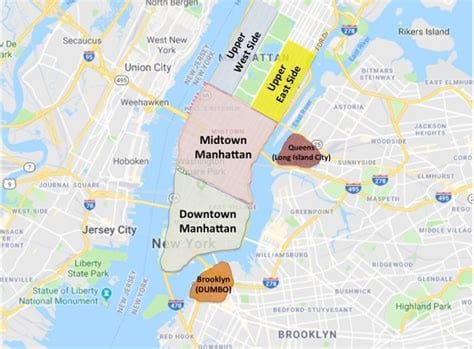The northeast is an area that experiences some of the most snowfall in the United States. It’s no surprise then that New York City (NYC) is one of the cities that receives the most snowfall during the winter months. But what month snows the most in NYC?
The answer to this question depends on the year. Generally, NYC is known to have the most snow during the months of December, January, and February. The snowiest month of the year is usually January, when the city gets an average of 13.7 inches of snow. However, due to weather variability, the snowiest month can vary from year to year.
Over the last five years, the snowiest month has averaged out to be February. During that time, the city has seen an average of 13.8 inches of snow in February, compared to 13.4 inches in January and 11.4 inches in December.
The snowiest winter in NYC was in 1995-1996, when an astounding 81 inches of snow fell. That’s an average of over 6 inches of snow per month! The second snowiest winter was in 2014-2015, when the city was hit with 65.5 inches of snow.
It can also be helpful to look at the snowiest day in NYC for each month. The snowiest day in December was on December 26, 1947, when the city was hit with 21.2 inches of snow. Meanwhile, the snowiest day in January was on January 7, 1996, when the city was pelted with 18.2 inches of snow. The snowiest day in February was on February 11, 2006, when 19.8 inches of snow fell.
The bottom line is that the snowiest month in NYC is usually January or February. While the snowiest month can vary from year to year, the city does tend to see the most snow during the winter months of December, January, and February.
NYC Snowfall: Discovering the City’s Snowiest Month
If you’re a New Yorker wondering what month snows the most in NYC, then you’re in luck – we’ve got the answer. In NYC, the snowiest month is usually January. According to the National Weather Service, the average snowfall for NYC during the month of January is around 7.5 inches.
Throughout the year, NYC can experience anywhere from a few inches of snow to several feet of snow. In 2019, the city saw its highest snowfall in a single month in January, when temperatures dropped and 24.5 inches of snow fell. The heaviest snowfall NYC has ever recorded was in February 2016, when 33.9 inches of snow was recorded.
In addition to January being the snowiest month in NYC, it’s also the coldest. The average temperature during the month of January is usually in the mid-30s. The temperature can dip below zero on some days, making it the coldest month of the year.
When it comes to snowfall, the amount of snow that falls in NYC can vary greatly from year to year. However, it’s safe to say that January is usually the snowiest month in NYC. So if you’re looking for a wintery experience, plan your visit to NYC during January for the best chance of seeing snow.
Table: Average Snowfall in NYC by Month
| Month | Average Snowfall |
|---|---|
| January | 7.5 inches |
| February | 5.8 inches |
| March | 4.5 inches |
| April | 2.7 inches |
Uncovering the Science Behind NYC’s Snowiest Month
Everyone knows that New York City is one of the snowiest cities in the United States, but not everyone knows what its snowiest month is. To uncover the science behind NYC’s snowiest month, let’s take a look at the data.
According to the National Weather Service, the average snowfall in New York City is 36.5 inches. But, there is a significant variation in snowfall between months. The snowiest month of the year in NYC is January, with an average of 12.7 inches. February comes in second place with an average of 10.6 inches, followed by December with an average of 8.3 inches.
So, why does New York City get so much snow during the winter months? The reason is simple: the city is located in the northern hemisphere, which is much colder than the southern hemisphere. This means that the air is colder and more humid, creating perfect conditions for snowfall. Additionally, the city is located close to the ocean, which helps to keep the temperatures lower and create more snow.
But, what about other factors that could affect the amount of snowfall? One factor is the type of snow. Heavy, wet snow is more likely to stick to the ground than light, dry snow. Another factor is wind. Strong winds can blow the snow away or keep it from sticking to the ground. Finally, the temperature can also impact the amount of snowfall. If the temperatures are higher, the snow will melt faster, leading to less accumulation.
To sum it up, the snowiest month of the year in New York City is January. The city’s location in the northern hemisphere and close proximity to the ocean create ideal conditions for snowfall. Additionally, the type of snow, wind speed, and temperature all play a role in determining the amount of snowfall each month.
So, if you’re looking for a month of guaranteed snowfall, head to New York City in January!
 Road Topic Tourism & Travel
Road Topic Tourism & Travel




